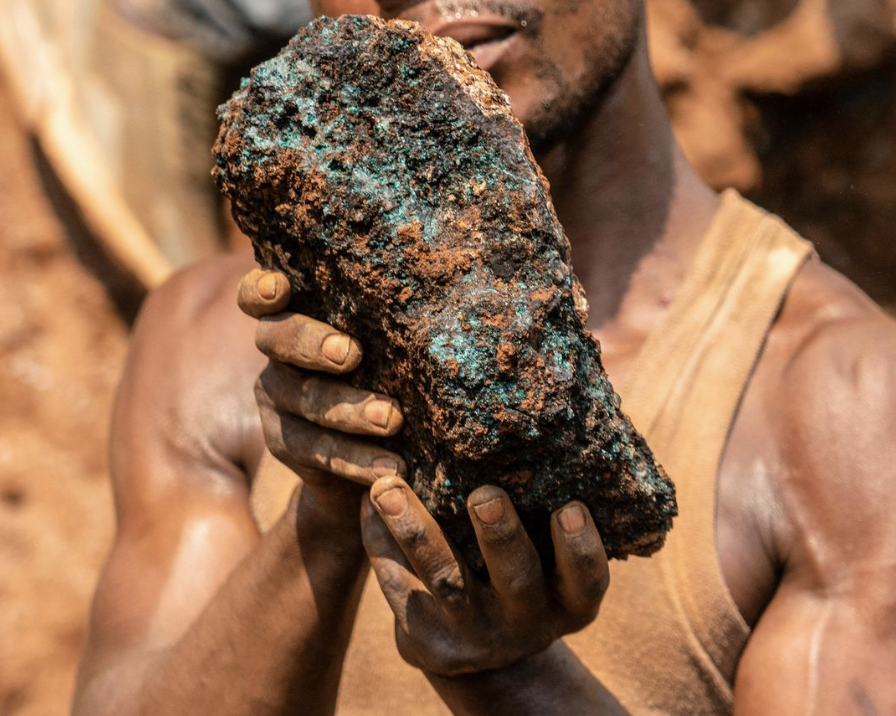By:
Mr. Kara, a professor of human trafficking and modern slavery at Nottingham University and a senior fellow at Harvard’s School of Public Health, labels himself an activist. His journeys through the Congo’s jungles and mines are surprisingly reminiscent of the country’s 19th-century explorers, as he treks where few others have dared and evokes the grandeur of a magnificent country—all to witness the shocking labor and environmental practices that the world papers over with, as the author writes, “vacant statements on zero-tolerance policies and other hollow PR” in pursuit of cobalt.
Why cobalt? Because today’s smartphones, laptops, leaf blowers, toys and so much more owe their revolutionary portability to the advent of cobalt-infused lithium batteries. Up until the late 1990s, the uses for cobalt—in magnets, dyes, inks, chemical catalysts and little else—required some 20 kilotons of the mineral a year, a relatively modest figure by mining standards and one that had remained little changed over the previous three decades. Then the first lithium decade vaulted annual cobalt demand to about 60 kilotons.
Three-fourths of that cobalt comes from the Congo, a market share that’s more than double OPEC’s claim on oil. Now comes the electric vehicle’s half-ton battery, each one using thousands of smartphones’ worth of minerals. Even at only 10% of global auto sales, electric vehicles have already pushed annual cobalt demand to 140 kilotons; it is expected to exceed 200 kilotons by 2026 as new battery factories come online and will explode from there when proposed EV mandates are supposed to kick in, many within the coming decade.
The heart of Mr. Kara’s mission is to document the use of artisanal mining—that is, human digging and toting by manual, brute force rather than using trucks and backhoes. You’re halfway through the book before Mr. Kara’s bombshell: The artisanal share of the Congo’s output, often dismissed as negligible, may exceed 30%. As the author warns: “Do not be fooled by the word ‘artisanal’ ”—it’s far from “pleasant mining activities conducted by skilled artisans.” In place after place he visited, whether with official escorts or by surreptitious entry, what he saw was “a hellscape of craters and tunnels, patrolled by maniacs with guns.” It was a “lunar wasteland,” a “devastated landscape” that “resembled a battlefield after an aerial bombardment.”
The reader senses that the author has been left shell-shocked, not from the aesthetic carnage but from seeing thousands of people mining by hand, hammer and shovel in vast open pits hundreds of feet deep, most of the pits arrayed with hand-dug tunnels. Mr. Kara reports visiting a typical mine where “more than three thousand women, children, and men shoveled, scraped, and scrounged . . . under a ferocious sun and a haze of dust.” The book has no photographs, an understandable absence given the risks of using a camera with armed guards everywhere. Instead Mr. Kara captures the impact of artisanal mining through the powerful stories of the miners—men, women and children—that he has gleaned through interviews. It’s often hard to read his descriptions of the miners’ daily lives, the risks, accidents, promises unfulfilled and, too often, heart-wrenching tales of maimed or dead children.
As for the programs that claim to tag and track ostensibly child-free cobalt, Mr. Kara’s compelling chronicle makes it clear that “there is no accurate way to disaggregate artisanal from industrial production”—that is, to know whether the cobalt in any particular product came from an artisanal mine or not. And since more than 70% of the world’s cobalt is refined in China, the commingling is impossible to unravel.
Mr. Kara spares no one from responsibility, from the Chinese firms that he sees everywhere in the country to the Congo’s national and local governments. He calls out Western tech and car companies, as well as nongovernmental organizations, for their eager commitments to “international human rights norms” and “zero-tolerance policies on child labor.” These commitments, the author argues, are at best unverified, perhaps even unverifiable. At one mining site that employed more than 10,000 artisanal miners, the author noticed a sign at the entrance that would have been laughable if it weren’t so tragic: “Our values—Transparent, dynamic, respectful, accountable, socially responsible.”
Some will claim that, to reduce the harm Mr. Kara documents, cobalt demand can be reduced by recycling and modifying chemical formulations. But even assuming greater adoption of different chemistries and achieving a recycling nirvana, forecasts still show overall demand for cobalt soaring.
The lessons in “Cobalt Red” extend to dozens of other minerals. The path to energy-transition goals runs through all kinds of mines located around the globe, from Russia’s Arctic to Brazil’s Amazon forests, from Mozambique to Chile and beyond. The global production of copper, lithium, manganese, nickel and many more minerals will need to rise more than 1,000% in the next few years to supply all the electric vehicles, windmills and solar modules imagined or mandated. The author writes that some 45 million people are directly involved in artisanal mining globally. We await adventurers as brave as Mr. Kara to shine a light on those supply-chain realities too.
“Cobalt Red” concludes that the “exploitation of the poorest people of the Congo” is a “moral reversion.” Amen.
To see this article in its entirety and subscribe to others like it, choose to read more.![]()
Source: ‘Cobalt Red’ Review: The Human Price of Cobalt – WSJ
 Listen Online
Listen Online Watch Online
Watch Online Find a Station in Your Area
Find a Station in Your Area










 Listen Now
Listen Now Watch Online
Watch Online
